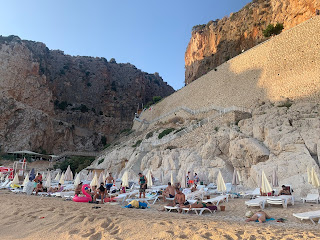This week was officially my last working with the UNFPA EECA office. I have been working remotely from home these last two weeks to assist with a few events I was heavily engaged with over the summer including a regional workshop on disability, part of the EECA roadmap to ICPD25, taking place next week (pictures to follow). The workshop aims to address and accelerate rights and choices for women and young people with disabilities in the region. The EECA region has a population of over 409 million, of which 16.5 million are people with disabilities. People with disabilities are faced with several barriers when it comes to accessing SRHR. Some of which include lack of accessible services and adequate information, cost of services, and lack of knowledge and attitudes of service providers. The ICPD Agenda and universal access to SRHR can not be achieved if nations fail to devise policies to address these barriers. Several EECA countries are in the process of developing national SRH APs and addressing the needs of people with disabilities, and working with governments and civil service organizations to devise policies, gather data, and train health care providers in order to best accommodate the population left furthest behind.
This summer has been full of learning and reflections. I was part of several SRH interventions leading up to the Nairobi Summit and the acceleration of the ICPD agenda in the region. I really look forward to governments and high-level officials convene in Nairobi to take forward their commitments and deliver the ICPD promise.
I am extremely grateful to have worked for an organization that supports our women and youth in the most intimate matters of life and strives to secure their dignity and the right of choice. I would like to thank the Marxe Career Services at my school, and the UNA-NY for connecting me to this internship and for their support in making this possible. I would also like to deeply thank my supervisor, and mentor, Dr. Tamar Khomasuridze, for her utmost support and guidance throughout the internship.
As I continue with my second semester of graduate studies, I feel ever so motivated and prepared to work towards the betterment of women’s status and those most vulnerable in our society.
Because everyone counts!
Young people at the regional workshop, Leaving No One Behind: Ensuring rights and choices for women and young people with disabilities (Right). Opening remarks from the Regional Director, Alanna Armitage (Left).
 |
| Sanna Maris, Rutgers, and Tamar Khomasuridze, SRH Regional Director, at the SRHR session on day 2 of the workshop. |
 |
| Presentation by Serbia CO on advancing SRHR policies for improved access for people with disabilities. |












































